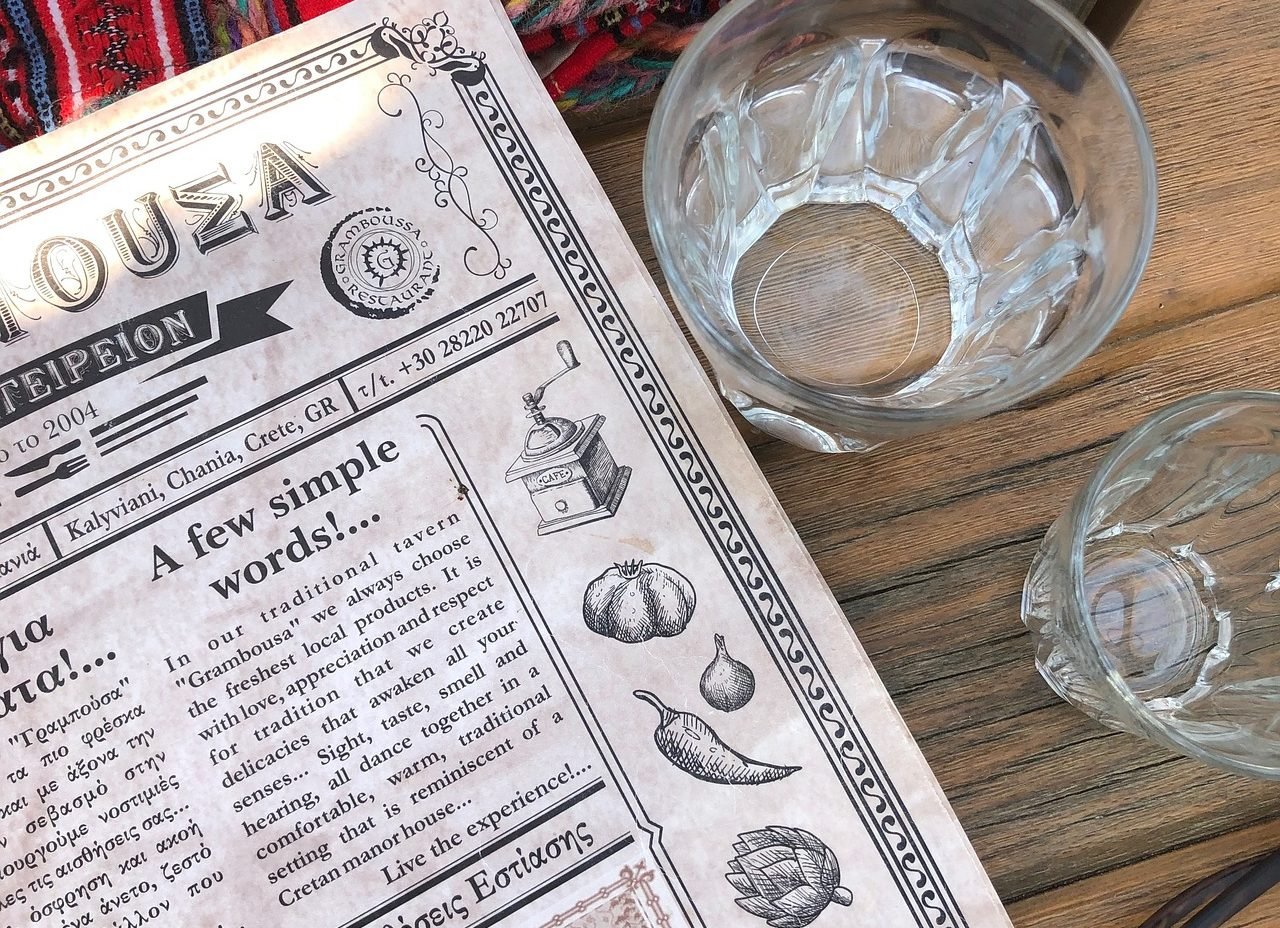
The menu is probably the most widely used, most common item in all food-selling environments. Whether it is a restaurant, a bar, or a traditional Greek tavern, the menu is always there. Nowadays, we are moving toward a more digital dimension, often scanning a QR code present at the table. But even so, reading a physical menu, as the initial ritual of the meal, can never be replaced entirely.
So have you ever wondered when and where the menu custom began? Let us go, as always, to discover its ancient origins.
The word menu
Obviously the word comes from the French “menu,” meaning small, which in turn finds its roots in the Latin word “minutus,” with the same meaning.
The word was then assigned to mean a small catalog, a list, that was offered to diners before the meal. Ok, perfect, the French invented the menu. Right? Absolutely not. As we often discover in these historica gastronomic journeys of ours, to find the truth, one must travel back millennia.
The banquets of ancient Greece
We all know how important food was in social life in ancient Greece. Banquets, still famous today, were the main social event of the then world. During these feasts, they served more than just wine and stage entertainment
Most importantly, one could enjoy in company the various delicacies prepared by the μαγειρες (màghires=cooks). Once the meal time was over, it was then on to the symposium. This was the tasting of wines accompanied by cheese, bread and honey.
Finally, the event continued with singing, dancing, performances in honor of the gods, and sometimes, even in entertainment..for adults only.
We, however, are here to figure out exactly what the menu has to do with all this.
Well, Athenaeus of Naucrati will tell us just that.
The birth of the “gastronomic list”
Within Athenaeus’ most famous masterpiece, Δειπνοσοφισταί (Deipnosophistae), he tolds us a very important detail of the customs at banquets in ancient Greece.
ὅτι ἔθος ἦν ἐν τοῖς δείπνοις τῷ ἑστάτορι κατακλιθέντι προδίδοσθαι γραμματείδιόν τι περιέχον ἀναγραφὴν τῶν παρεσκευασμένων, ἐφ’ ᾧ εἰδέναι ὅ τι μέλλει ὄψον φέρειν ὁ μάγειρος.
It was customary at banquets to present the guest, after he reclined on the couch, with a board containing a list of prepared foods, so that he would know which dishes the cook would serve.
Athenaeus, Deipnosophists, book II
So we see how already during banquets in Athens, it was customary to inform the guest what the evening’s courses would be. These were the earliest examples, thus the birth, of the menus that we now find at every restaurant or bar.
They were certainly not exactly the menu as we understand it today; for instance, it was customary in ancient times to serve several foods at once.
However, we must add that neither did the French invent meals divided into individual courses. This was introduced about 1810 by one of the ambassadors of the Russian Emperor Alexander I, namely the one who disbarred Alexandros Ypsilanti from the Russian army.
See all the latest news from Greece and the world at Greekreporter.com. Contact our newsroom to report an update or send your story, photos and videos. Follow GR on Google News and subscribe here to our daily email!



